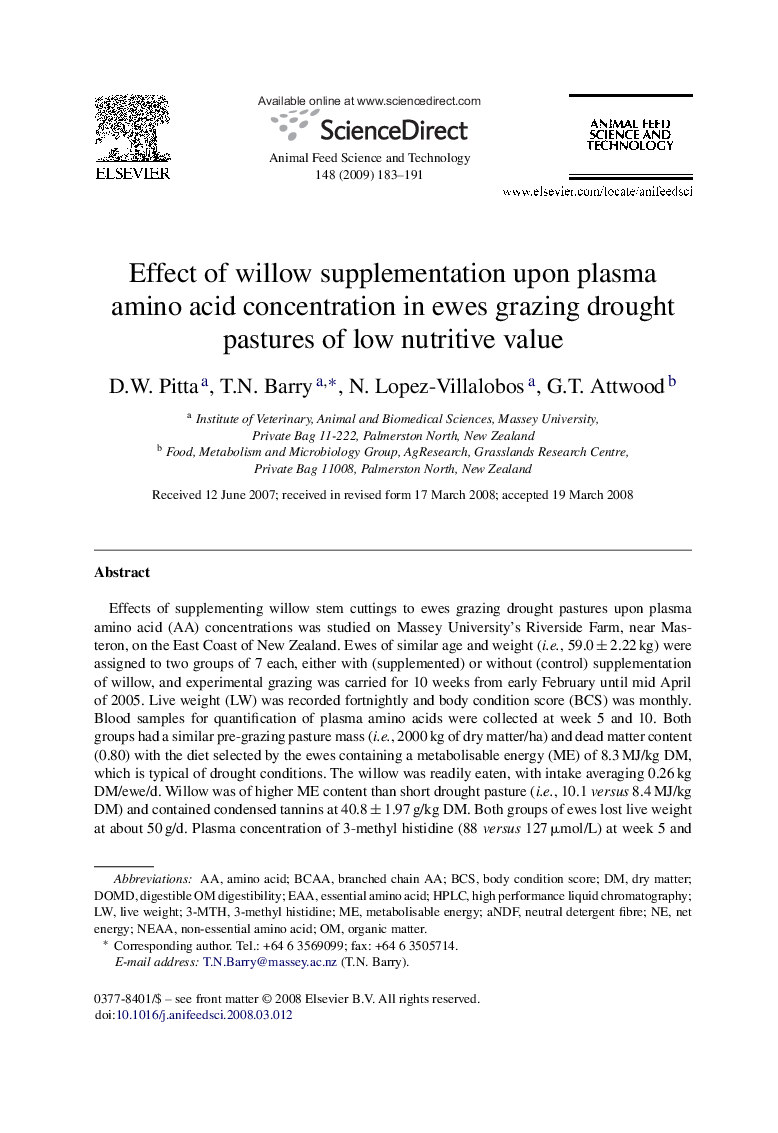| Article ID | Journal | Published Year | Pages | File Type |
|---|---|---|---|---|
| 2420605 | Animal Feed Science and Technology | 2009 | 9 Pages |
Effects of supplementing willow stem cuttings to ewes grazing drought pastures upon plasma amino acid (AA) concentrations was studied on Massey University's Riverside Farm, near Masteron, on the East Coast of New Zealand. Ewes of similar age and weight (i.e., 59.0 ± 2.22 kg) were assigned to two groups of 7 each, either with (supplemented) or without (control) supplementation of willow, and experimental grazing was carried for 10 weeks from early February until mid April of 2005. Live weight (LW) was recorded fortnightly and body condition score (BCS) was monthly. Blood samples for quantification of plasma amino acids were collected at week 5 and 10. Both groups had a similar pre-grazing pasture mass (i.e., 2000 kg of dry matter/ha) and dead matter content (0.80) with the diet selected by the ewes containing a metabolisable energy (ME) of 8.3 MJ/kg DM, which is typical of drought conditions. The willow was readily eaten, with intake averaging 0.26 kg DM/ewe/d. Willow was of higher ME content than short drought pasture (i.e., 10.1 versus 8.4 MJ/kg DM) and contained condensed tannins at 40.8 ± 1.97 g/kg DM. Both groups of ewes lost live weight at about 50 g/d. Plasma concentration of 3-methyl histidine (88 versus 127 μmol/L) at week 5 and non-essential amino acids (1082 versus 1417 μmol/L) at week 5 and (1155 versus 1324 μmol/L) at week 10, were substantially lower (P<0.05) in willow supplemented versus control ewes, indicating that willow supplementation reduced catabolism of body proteins in ewes under drought feeding conditions.
